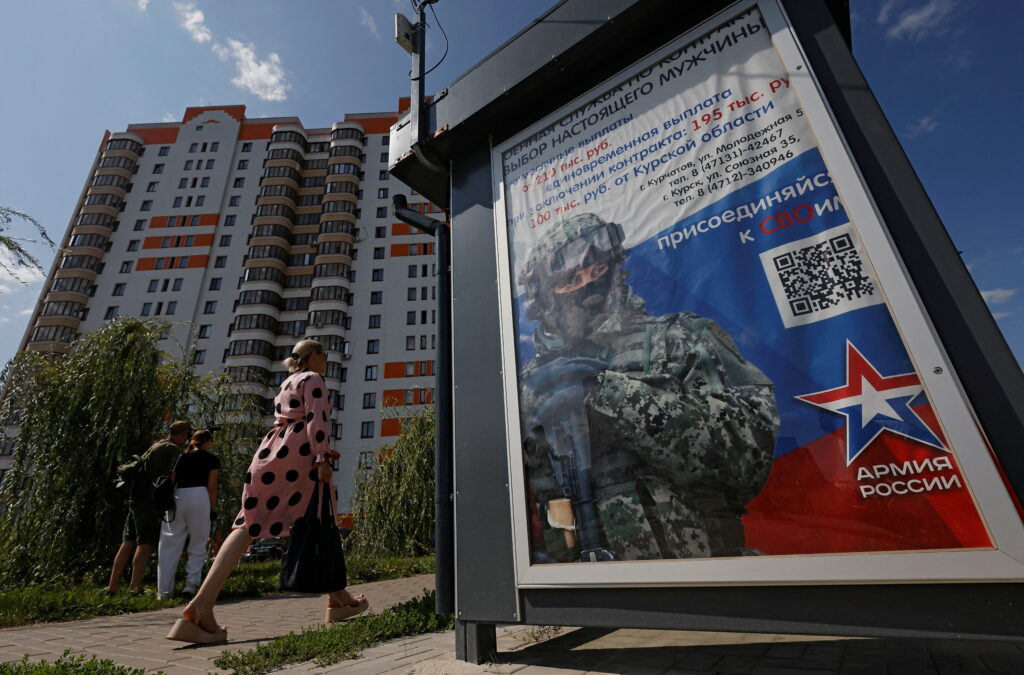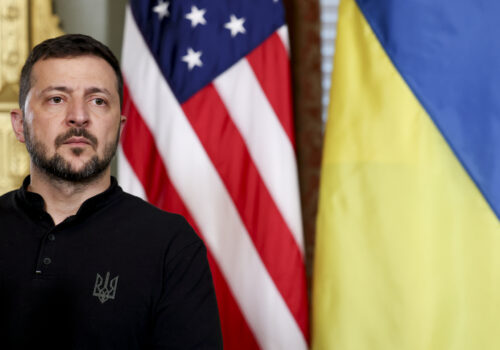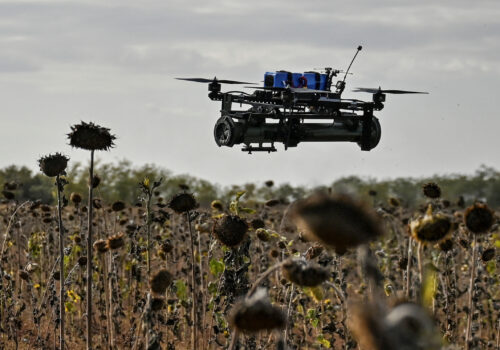
Russia’s economy is overheating but Putin cannot change course

Russia’s Central Bank raised its key policy rate to 21 percent in late October as the Russian authorities struggle to manage a wartime economy that is in danger of overheating due to a combination of factors including rising inflation, sanctions pressure, and record defense sector spending. While Kremlin officials and many international analysts insist that the Russian economy remains in remarkably good shape, the country’s longer term economic outlook is becoming increasingly precarious.
Despite frequent predictions of impending economic meltdown, there is currently little sign that the Russian economy is in immediate danger. At the same time, the full-scale invasion of Ukraine appears to have placed Vladimir Putin in an unenviable economic position. If the war continues for an extended period and is accompanied by factors including increased sanctions, inefficient military leadership, and pervasive corruption, this could plunge Russia into a severe economic recession.
Ending the conflict also presents economic risks. Russia’s unprecedented military spending since 2022 has enriched elites and boosted domestic demand, overheating the economy. If the war ends, this fiscal stimulus will cease, potentially causing a significant drop in real incomes for much of the population. This could lead to heightened social tensions and undermine the stability of the ruling regime.
Vladimir Putin frequently claims that Western sanctions have been counterproductive and often uses his public addresses to boast of Russia’s wartime economic performance. Official data broadly supports this narrative, with Russia reporting strong GDP growth in 2023 and during the first half of the current year.
A range of factors are fueling the current growth of the Russian economy, with military expenditure perhaps the single most important driver. The Russian authorities allocated around six percent of GDP for the military in 2024, representing the highest total since the Cold War. Further increases are planned for 2025. Nor does this cover all war-related costs. Significant additional spending is required to fund a range of defense-related industries and to finance the occupation of Ukrainian regions currently under Kremlin control.
Stay updated
As the world watches the Russian invasion of Ukraine unfold, UkraineAlert delivers the best Atlantic Council expert insight and analysis on Ukraine twice a week directly to your inbox.
Despite the outward appearance of stability, Russia’s wartime economy faces mounting challenges. Russia’s National Welfare Fund is steadily dwindling, while export revenues have gradually declined during 2024 as a result of tightening sanctions and constraints on resource extraction caused by limited access to modern technologies.
Economists are now warning that the Russian economy is in danger of overheating, largely as a result of unprecedented military spending. Meanwhile, Russia’s low unemployment rate of around 2.5 percent is more indicative of a severe labor shortage than a healthy economy. The problems caused by this lack of workforce add to the challenges created by sanctions-related restrictions on access to Western equipment, exacerbating Russia’s technological deficit.
Inflation currently poses the single greatest threat to Putin’s wartime economy, and was a key factor behind the recent decision to hike the country’s key interest rate. Russia’s Central Bank aims to reduce inflation to around four percent in 2025, but this may not be a realistic target. Indeed, official inflation data from the Kremlin may actually underestimate the rising cost of living for ordinary Russians.
Over the past year, even official Russian government bodies such as Rosstat have cautiously acknowledged negative economic trends such as rising inflation, labor shortages, and declining activity in some sectors of the economy. Taken together, these negative factors are likely to contribute to a period of slower growth, if not stagnation.
Eurasia Center events
The impact of Western sanctions on the Russian economy remains hotly debated. While the sanctions imposed in response to the full-scale invasion of Ukraine have yet to produce the kind of economic crisis that many analysts were anticipating in early 2022, the effectiveness of these measures remains difficult to quantify and should not be dismissed. Tellingly, while Putin insists sanctions have not hurt Russia, the lifting of all sanctions remains a key Kremlin demand.
Sanctions have clearly complicated the situation for Russian exports and for the import of technologies. However, Russia has been able to find numerous ways of bypassing or otherwise mitigating the effects of many restrictions. Russia’s economically vital energy exports have been redirected from the West to the Global South, with a shadow fleet of tankers playing a crucial role in this process.
Similarly, Russia has been able to continue accessing military technologies and equipment by importing via third party countries including China. This has created some inconvenience and led to rising costs, but it has prevented sanctions from achieving the desired goal of isolating the Russian economy and depriving Putin’s war machine of essential components.
A number of additional factors have further blunted the impact of sanctions. These include slow implementation and the continued existence of multiple loopholes. Restrictions on capital transfers have also played into the Kremlin’s hands, keeping wealth within Russia.
Many Russians have clearly benefited financially from the war. Military contracts have proved particularly lucrative for the country’s business elite, while the departure of Western companies has created vacant niches for Russian companies to fill.
Ordinary Russian citizens have been able to earn unprecedented sums of money by enlisting in the military, with the families of soldiers killed or wounded in Ukraine receiving substantial payments. Those working in factories servicing the war effort have also seen salaries increase as much as five times amid surging demand and labor scarcity. Overall, the invasion of Ukraine has enabled millions of Russians to pull themselves out of poverty.
The economic benefits enjoyed by a wide range of social groups in Russia as a result of the war have helped foster pro-war sentiment and bolster support for the Putin regime. Ending the invasion of Ukraine would therefore potentially weaken the position of the authorities and fuel instability. This creates further incentives to continue the war.
The current state of the Russian economy is far from critical but it does present Putin with a dilemma. He currently appears intent on continuing the war indefinitely while hoping to outlast the West and exhaust Ukraine. Alternatively, he could seek to move toward a settlement of some kind. However, there is a very real danger that either option could end up plunging Russia into a serious economic crisis.
If Putin opts to maintain his uncompromising push for an historic victory in Ukraine, it is not clear that Russia has the resources to wage a prolonged war on the present scale. In this scenario, current warning signs such as rising inflation and labor shortages could eventually become major problems. If he seeks a settlement and withdraws the Keynesian crutch of today’s vastly inflated military spending, the economic repercussions could be dire. The Russian economy is not yet close to collapse, but it is increasingly dependent on wartime conditions and faces growing risks of overheating.
Alexander Mertens is professor of finance at National University of Kyiv-Mohyla Academy and professor of economics and finance at Kyiv’s International Institute of Business. With special thanks to Oleksiy Zagorodnyuk for his help with data research and analysis.
Further reading
The views expressed in UkraineAlert are solely those of the authors and do not necessarily reflect the views of the Atlantic Council, its staff, or its supporters.

The Eurasia Center’s mission is to enhance transatlantic cooperation in promoting stability, democratic values and prosperity in Eurasia, from Eastern Europe and Turkey in the West to the Caucasus, Russia and Central Asia in the East.
Follow us on social media
and support our work
Image: A woman walks past a poster promoting military service under the contract in Russian Armed Forces, in the town of Kurchatov in the Kursk Region, Russia. August 27, 2024. (REUTERS/Maxim Shemetov)





